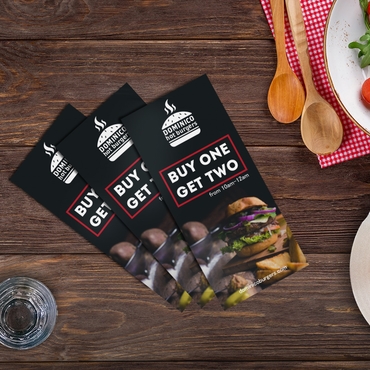Rack cards are everywhere, from hotel lobbies and coffee shops to real estate offices and medical clinics.
Let’s be honest: how many of them do people actually take?
If you’re printing rack cards for your business, you want them to stand out, get noticed, and most importantly, get picked up, whether you invest in professional cheap rack card printing services or learn how to print rack cards at home for smaller batches.
Many businesses also look for discount rack card printing options to maximize results while keeping costs low.
In this guide, we’ll walk you through the essential elements of a rack card that actually works, plus expert tips, examples by industry, and a few common mistakes to avoid.
What Are Rack Cards (And Why Should You Use Them)?

A rack card is a vertical print marketing piece, typically 4″ x 9″, designed to fit into high-traffic display racks. They’re a staple in locations where people naturally browse printed rack cards while waiting or passing by.
They work well because:
- They grab attention quickly with bold headlines and visuals
- They’re easy to display and distribute in public spaces
- They provide more room than a business card, but are still compact
- They’re ideal for tourism, events, real estate, medical practices, and local services
Think of rack cards as mini-billboards that work 24/7. When designed strategically, they can drive calls, visits, or bookings without needing any additional touchpoint, even if you’re working with rack card printing cheap for a budget-friendly campaign.
Step-by-Step: How to Design a Rack Card That Gets Picked Up
1. Start With a Clear Goal
Before you start designing anything, clarify what you want the rack card to accomplish. This will influence everything from layout to word choice.
Do you want people to:
- Book an appointment?
- Visit your website or physical location?
- Call for a quote?
- Scan a QR code to RSVP to an event?
Every element on the card should guide readers toward that one main action.
If you’re offering a limited-time deal or an event, make that urgency clear right at the top. If you’re simply building brand awareness, use storytelling or testimonials to create an emotional connection.
2. Write a Headline That Stops the Scroll (Or the Walk-By)
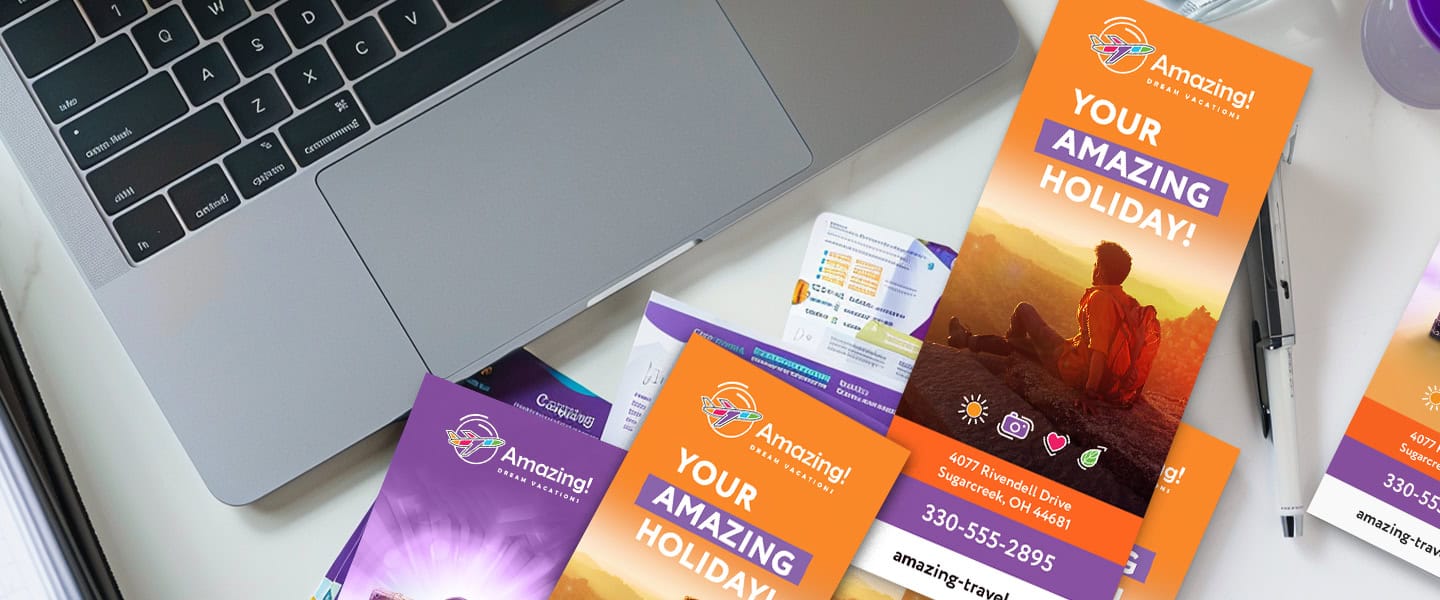
You get one chance to catch their eye.
Your headline should:
- Communicate a clear benefit
- Be specific, not generic
- Use simple language and powerful verbs
Examples:
- “Struggling with Back Pain? Relief Starts Here.”
- “Your Dream Home Is Just a Scan Away.”
- “Locals Save 20% This Month Only.”
Place the headline in the top third of your rack card so it’s visible even in crowded displays. Consider using contrasting colors or bold typography to make it pop.
3. Break Your Message Into Clear Sections
Rack cards should be easy to skim.
Break your content into sections using:
- Subheadings
- Bullet points
- Icons or visuals
A proven structure:
- Problem or question (hook)
- Solution or offer (your service/product)
- How it works (steps, highlights)
- Call to action (what they should do next)
Avoid long paragraphs or dense blocks of text. The easier it is to digest, the more likely they’ll read it —and respond to it, especially if your design makes rack cards cheap without sacrificing quality.
The easier it is to digest, the more likely they’ll read it, and respond to it, especially if your design makes print rack cards cheap without sacrificing quality.
4. Use High-Quality Visuals That Support Your Message
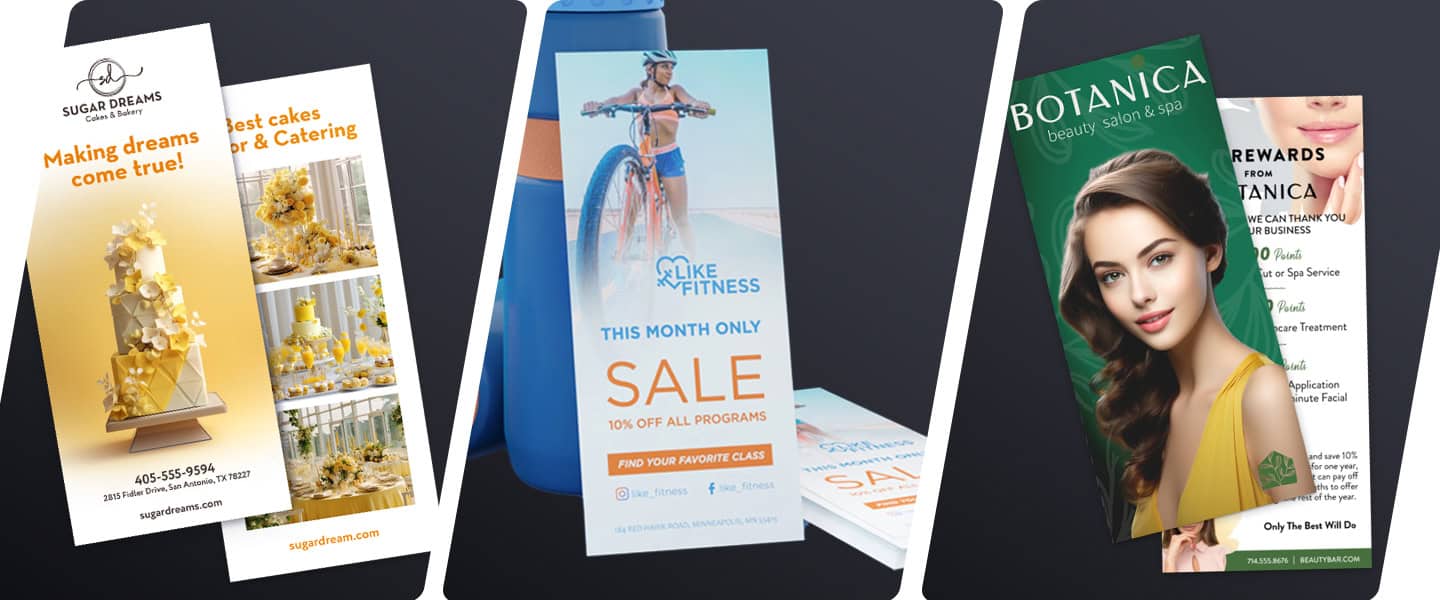
Visuals aren’t just decoration, they carry meaning.
Choose images that:
- Reinforce your message (e.g., a smiling customer, a product in use)
- Match your brand tone and color palette
- Are high-resolution and print-ready
Avoid stock photos that look generic or unrelated. If you’re in real estate, use a photo of the actual home or neighborhood. If you’re promoting wellness services, show the outcome (relaxation, vitality, confidence).
Consider adding a QR code linked to a brochure, booking page, or event invite. This works just as well if you’re experimenting with how to print rack cards cheap at home for a smaller test run.
5. Include a Strong, Specific Call to Action (CTA)
Your CTA should:
- Be direct: Tell them exactly what to do next
- Be visible: Use color contrast or boxed styling
- Be relevant: Match your goal from Step 1
Examples:
- “Scan to Book Your Appointment Now”
- “Visit Our Showroom at 123 Main St.”
- “Call Today for a Free Quote”
Place your CTA near the bottom, but repeat it once higher up if space allows. If possible, add an incentive like a discount code or freebie to boost conversions.
6. Don’t Forget Contact Details (Make Them Easy to Find)
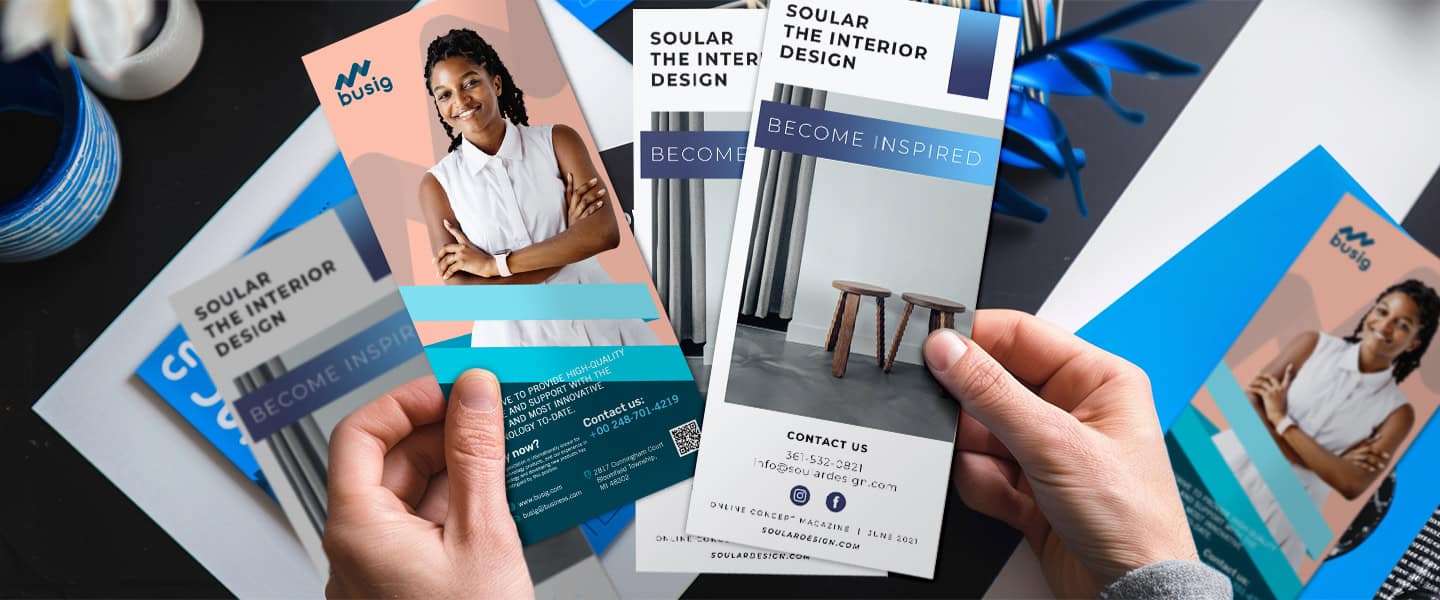
Even if your CTA includes a phone number or web link, make sure your contact information is repeated clearly:
- Website URL
- Phone number
- Email address
- Physical address (if relevant)
- Social media (only if consistently active)
Avoid tiny font sizes or placing this info in hard-to-read areas. Remember: the goal is ease.
Also consider adding branded elements like your logo, tagline, or slogan near this section to tie everything together.
7. Choose Premium Paper and Finish to Match Your Message
People judge your business based on how your materials feel.
Rack cards are often touched, held, and sometimes stashed for later. A flimsy card with dull print says “budget.” A thick, glossy card with crisp print says “professional.”
At Overnight Prints, we offer:
- Thick, durable cardstock
- Glossy UV coating to enhance colors and protect from smudging
- Double-sided full-color printing
- Fast turnaround (even overnight delivery!)
Print quality is a key part of your brand experience. Don’t cut corners here — even if you’re looking for cheap rack cards that still look premium.
Industry Examples: Rack Cards That Work
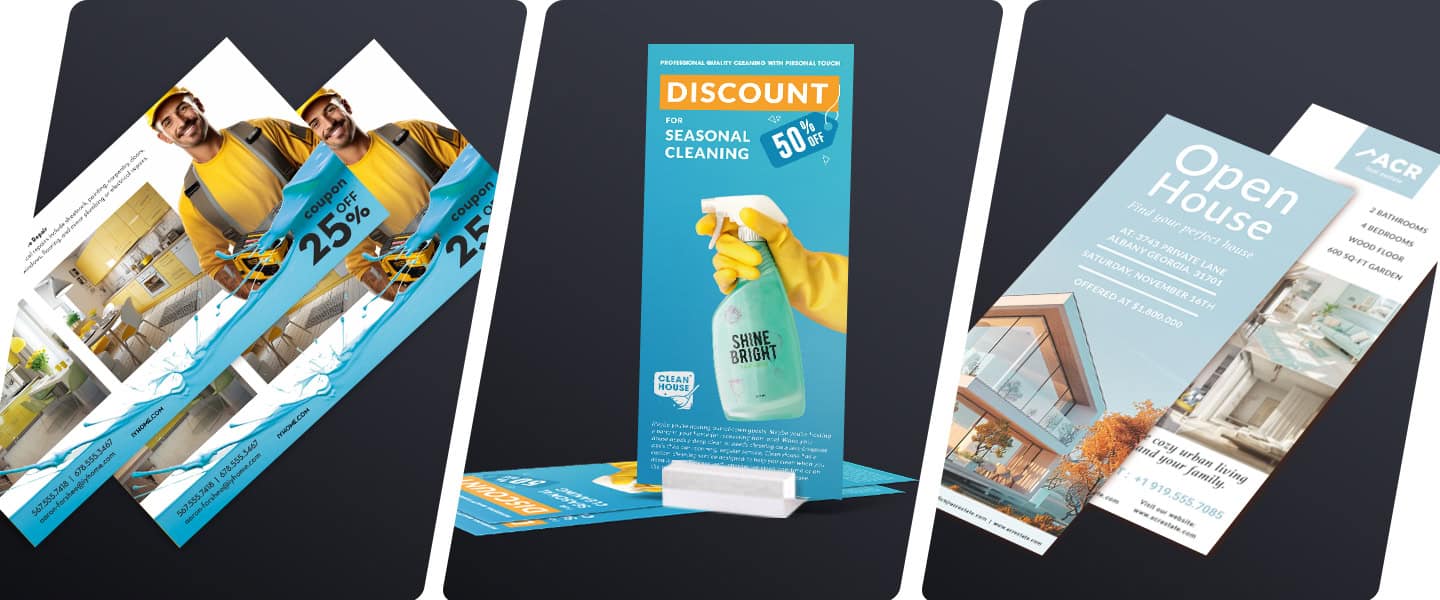
Real Estate
- Showcase property features with bold visuals
- Include agent info and QR code to schedule a tour
- Use testimonials for social proof
Medical & Wellness
- Display new patient promotions or accepted insurances
- Explain key services or treatment benefits
- Include a map or parking instructions
Events & Conferences
- Use as mini agendas or speaker lineups
- Include schedules, maps, or QR links to register
- Promote early bird offers or upgrades
Retail & Local Services
- Feature service menu, pricing, or seasonal sales
- Add coupons or promo codes
- Encourage repeat visits with loyalty offers
Tourism & Hospitality
- Offer day trip options or restaurant guides
- Highlight maps or local attractions
- Include business hours and reservation info
Mistakes to Avoid
- Using walls of text without breaks
- Forgetting to add a clear CTA
- Choosing low-resolution or irrelevant images
- Leaving out key contact info
- Printing on cheap paper that curls or fades
Final Thoughts: Make Your Rack Cards Work for You
Rack cards are small but mighty. When well-designed, they become a low-cost, high-impact part of your print marketing strategy.
Whether you’re a local business, national brand, or solo entrepreneur, the principles are the same: be clear, be visual, and guide the reader to action.
You can order rack cards professionally printed or try how to print them at home if you prefer DIY marketing.
Need to get started? Order premium rackcard from Overnight Prints today and get them delivered as soon as tomorrow. For budget-conscious campaigns, our rack cards cheap options deliver professional quality at an affordable price.






